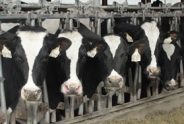Event Details
Date
July 13, 2020
Time
11 am
Location
Virtual, via Zoom
Cost
This event is free.
Host
Northeastern IPM Center
Tick IPM #3: Asian Longhorned Tick IPM
July 13, 2020Tick IPM #3: Asian Longhorned Tick IPM
Live Webinar
July 13, 2020, at 11:00 a.m. (eastern)
Register at cornell.zoom.us/webinar/register/WN_M3VrgcB6QOumFwtRFO4TVg
The webinar will be recorded for anyone unable to attend the live session.
Description
The Asian longhorned tick (ALT) is a threat to companion animals, livestock, and potentially also to wildlife. So far this species in the U.S. has not been found infected with human pathogens.
The Asian longhorned tick (ALT) is a threat to companion animals, livestock, and potentially also to wildlife. So far this species in the U.S. has not been found infected with human pathogens.
Field population of ALT were first detected in the U.S., in New Jersey in 2017. Unlike all other U.S. hard ticks, ALT adults are all female (no males) and reproduce by cloning. This means that single individuals if displaced into a new site can generate very large infestations?each female can lay several thousand eggs. The presence of large numbers of ticks may interfere with IPM targeting other more dangerous ticks?such as blacklegged ticks?leading people to panic and overreact.
Unlike blacklegged ticks, ALTs can easily number in the hundreds and even thousands (depending on stage) in any given area and on animals. So far, they have not shown much interest in humans, but there are exceptions. Regardless, it can be alarming to find a few hundred ticks crawling all over your pants?which can still happen even if you are practicing good tick avoidance?or even more all over your legs if you are not.
There is still a lot we don't know about ALTs, so this will be an overview of what we do know about the biology, ecology, and vectorial capacity of this tick species?and how existing approaches for combating native ticks may either work or backfire on this species.
The presenters will also discuss other invasive tick species in the U.S. and the potential for additional ones to become established.






